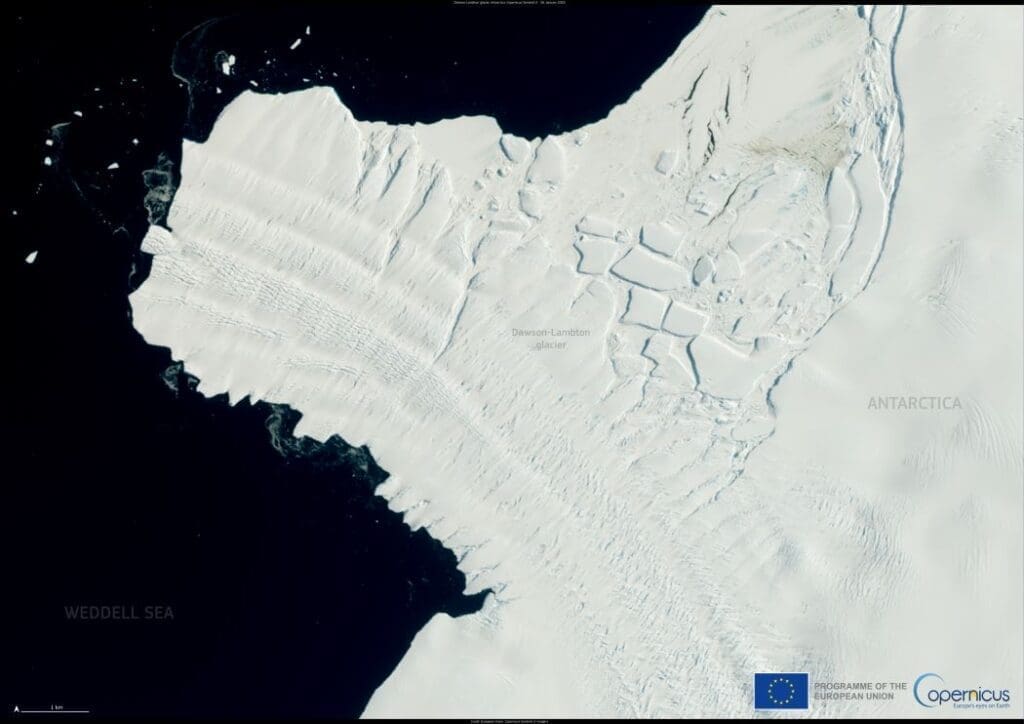The first-ever World Day for Glaciers, observed on 21 March 2025, draws attention to the accelerating loss of the world’s glaciers and its consequences for water resources, ecosystems, and sea-level rise. Glaciers serve as critical freshwater reserves, but warming temperatures are causing their rapid retreat. The impacts range from increased flooding risks to long-term water shortages for millions.
This image, taken by the Copernicus Sentinel-2 satellite on 26 January 2025, captures Antarctica’s Dawson-Lambton Glacier, home to an emperor penguin colony. The visible penguin guano in the top right of the image marks their presence. Like many glaciers, Dawson-Lambton faces ongoing ice loss due to climate change, raising concerns for the wildlife dependent on these habitats.

Satellite observations, including those from the Copernicus program, play a key role in tracking glacier retreat worldwide. Data compiled by the World Glacier Monitoring Service (WGMS) and the World Meteorological Organization (WMO) show that from 2022 to 2024, glaciers experienced their largest three-year mass loss on record.
Since 2000, global glacier melt has contributed 18 mm to sea-level rise, exposing hundreds of thousands to flooding risks each year. In some regions, including parts of North America and Europe, many glaciers are unlikely to survive the 21st century.
To recognize the scientific effort behind glacier research, the WGMS has introduced the ‘Glacier of the Year’ initiative. In 2025, the South Cascade Glacier in Washington, USA, received the title, honoring over 70 years of continuous glaciological monitoring.
With glaciers holding about 70% of the world’s freshwater, their loss threatens vital water supplies. The United Nations has declared 2025 the International Year of Glaciers’ Preservation to emphasize their importance and the urgent need for global action.
More information:
UNESCO World Water Assessment Programme, ‘The United Nations World Water Development Report 2025, Mountains and glaciers: water towers’, ISBN: 978-92-3-100743-9, 174 pages : illustrations, maps (2025). DOI: 10.54679/LHPJ5153
Article Sources: WMO & Copernicus
Featured image credit: European Union, Copernicus Sentinel-2 imagery




